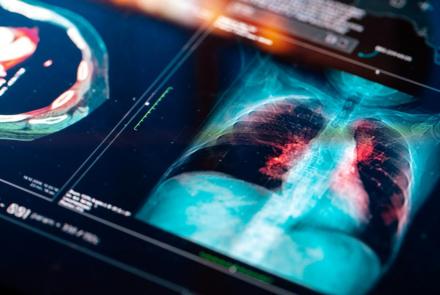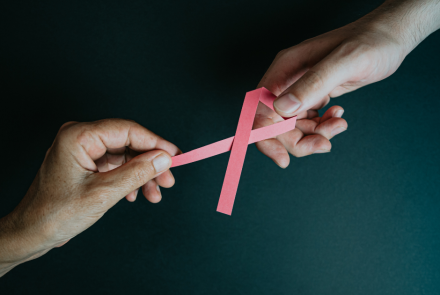The first COVID-19 vaccines to be approved by the U.S. Food and Drug Administration are effective and considered safe, according to Michal Tracz, MD, of Montefiore Nyack Hospital. While it is up to each person to choose whether to take the vaccine, it is important to understand how they work to help make the decision. “Your decision to take or not take the vaccine can have immense implications on your life or the life of your loved ones,” he said.
COVID-19 vaccines help the body develop immunity to the virus that causes COVID-19, without causing the illness itself.
The first two COVID-19 vaccines to receive FDA approval, Pfizer and Moderna, are at least 95% effective. “No matter what else we can say about it, the vaccine works,” he said. The two months of follow-up in the large-scale trials for the Moderna and Pfizer vaccines did not reveal anything worrisome in that timeframe, he noted. “We all wish to know more, and we don’t have long-term data yet, but so far, things are encouraging,” Dr. Tracz said.
“A sore arm is the most common side effect,” he said. “Some people, especially those with the history of the prior infection, get chills, muscle aches and headaches, but these go away quickly as well.”
The Pfizer and Moderna vaccines require two shots. The first shot starts building immunity against the virus, while the second shot, given a few weeks later, provides further protection. The shot is given in the upper arm.
Vaccine Basics
The body’s immune system uses different types of white blood cells to fight infection. These include B-lymphocytes (B cells) and T-lymphocytes (T cells). When a person is infected with the virus that causes COVID-19, the body uses these and other cells to fight the infection. After the infection, the body keeps a few T cells, called memory cells, which will work quickly if the body encounters the same virus again. And B cells will produce antibodies to attack the virus.“T cells stimulate B cells to produce antibodies, which in turn act like very specific tags to cover the intruders and single them out for destruction,” Dr. Tracz said.
The Pfizer and Moderna vaccines are known as mRNA vaccines. Unlike many types of vaccines, the mRNA vaccines don’t put a weakened or inactivated germ into the body. The vaccines give instructions (called mRNA) for cells to make a harmless piece of a so-called “spike protein,” which is found on the surface of the virus that causes COVID-19. Once the instructions are inside the immune cells, the cells use them to make the protein piece. Then the cell breaks down the instructions and gets rid of them in several days.
The cell then displays the protein piece on its surface. The immune system recognizes the protein does not belong there, and begins to build an immune response. It produces antibodies, just as it would if the body were naturally infected with the COVID-19 virus.
Vaccination leaves the body with a supply of “memory” T cells, as well as B cells that remember how to fight the virus in the future.
Facts About mRNA Vaccines
The Centers for Disease Control and Prevention (CDC) notes that:
- Like all vaccines, COVID-19 mRNA vaccines have been rigorously tested for safety before being authorized for use in the United States.
- mRNA technology is new, but not unknown. mRNA vaccines have been studied for more than a decade.
- mRNA vaccines do not contain a live virus and do not carry a risk of causing disease in the vaccinated person.
- mRNA from the vaccine never enters the nucleus of the cell and does not affect or interact with a person’s DNA.
Recently new a variant of the virus has been reported around the world, including the United States. The CDC says that currently there is no evidence that the variant has changed the effectiveness of COVID-19 vaccines. “Most experts believe this is unlikely to occur because of the nature of the immune response to the virus,” the CDC stated.
Making the Decision
Making the decision about whether to get a COVID-19 vaccine comes down to risk vs. benefit, Dr. Tracz says. “No one, not the FDA, not Moderna or Pfizer, can guarantee you the safety of these vaccines. A year from now we will know so much more about them. But lack of the guarantee does not mean to not take it. After all, what other guarantees do we have in life?” he said.
“Here we are, with the raging pandemic and new, more infectious variants on the way. So this should not be a conversation about guarantees, but rather of risks and benefits. On one hand, we have the risk of COVID infection, which includes both severe disease in the ICU and a risk of long-term cough, fatigue and shortness of breath for even mild to moderate cases. On the other, we have a theoretical risk of a vaccine that has so far done well in over 30,000 people in clinical studies and hundreds of thousands more by the day. Yes, I would love to wait for the scientific papers of 2022, but I do not think we have this kind of time.”
The decision to vaccinate is personal and it needs to stay that way, he said. People with known allergies should talk about the vaccine with their doctor, for example. “But do separate sinister misinformation from sensible concerns and, in the end, make the decision on those grounds.” He said. “No one likes the uncertainty of a novel shot in the arm, but COVID is lurking and we now have vaccines that can help us avoid illness and death.”
“I personally thought real hard about vaccinating myself. Like most other people, I wanted to wait and see how it goes and had some apprehension regarding the novelty of this approach. Intense study of the topic, together with the rapidly rising COVID case count in the US and Rockland County, however, made me realize that we are running out of time. This virus is not going anywhere and with the new UK variant 70% more infective than the virus we already know, our current preventive efforts are likely to fail, especially in the hospital. As much as I disliked getting stabbed with some mRNA, I much prefer that to the viral assault on my lungs. That is why I got vaccinated on January 6.” Dr. Tracz said.






